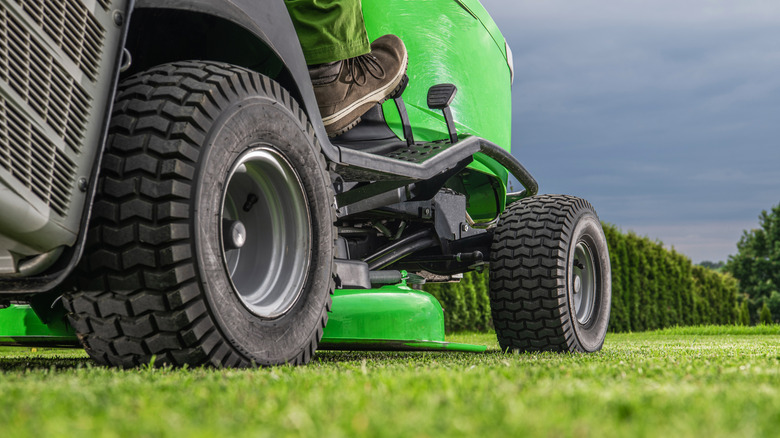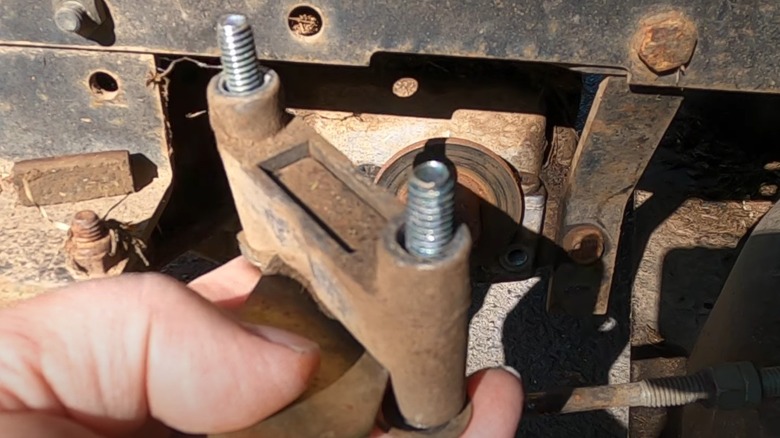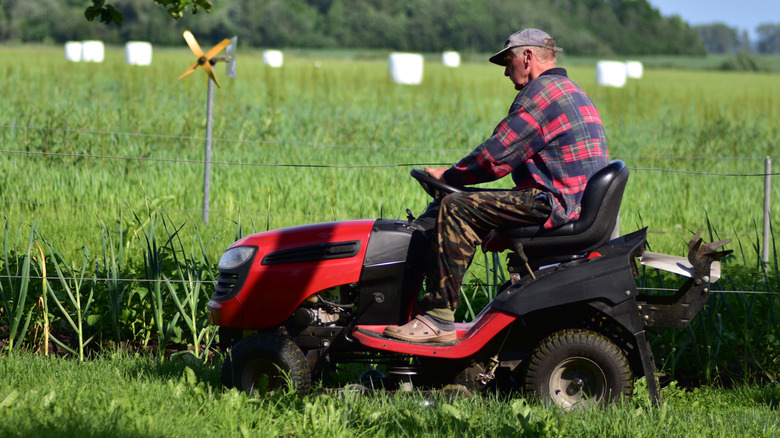How To Know It's Time To Replace The Brakes On Your Mower
For those with big lawns or just a strong dislike of push lawn mowers, a riding mower can be a lifesaver. They're easy to use, less physically taxing while cutting your grass, and can save some serious time, to name a few of their many perks. Of course, it should be said that these benefits can only be enjoyed to their fullest if your mower is properly taken care of. There are several maintenance tasks to perform to keep your mower running smoothly. For one, you should replace the tires on your riding mower at some point, and you should have the brakes replaced as well.
Considering they don't see as heavy and frequent use as those on a car or truck, riding mower brakes can be easy to overlook. However, in the name of safety, they should be serviced at some point. More specifically, it's your responsibility to be mindful of your brakes' condition. Similarly to car brakes, if they feel soft or spongy when the brake pedal is pushed, stopping time dramatically increases with the pedal all the way to the floor, or you notice unusual whining or grinding sounds, chances are you're due for new pads. It's also recommended that the brakes be inspected every 50 to 100 hours of use, so if your brake pads are found to be worn down or damaged, a replacement is in order.
How to replace riding lawn mower brakes yourself
If your mower is experiencing brake performance issues, you might not have to bring it to a professional. If you feel you can handle it, it doesn't take much to replace your riding lawn mower's brakes from the comfort of your garage or driveway. All you need are the necessary tools to remove the two back wheels of your mower, a fresh set of pads, a socket wrench, and a set of pliers. You'll also need a jack, as engaging the parking brake, putting your mower on a flat, level surface, and propping it up is essential to the process. A floor jack, one of the many types of automotive jacks out there, should do fine.
1. With the mower propped up, remove the back wheel and set it aside.
2. Using the correct size socket, remove the bolts holding the brake assembly in place. Remove the disc behind it as well.
3. Remove the old rectangular brake pads. There should be one inside the assembly and behind the disc, which could require pliers to remove.
4. Replace the old brake pads with new ones, cleaning out any dirt and debris present.
5. Reassemble everything and repeat the process on the other side.
Some of the specifics may vary from model to model, but this covers the broad strokes of mower brake replacement. While you're working on the pads, though, it's in your best interest to check in on other elements of your mower's brake system and fix them up as needed.
Other mower brake elements to check in on and what to look for
When checking or replacing your riding mower's brake pads, it's a good idea to look over other aspects of the brake system. First and foremost, take care of any debris, dirt, or grime that may have been trapped in and around the brake system. Keeping everything clean will ensure your brakes work effectively and wear normally with regular use, free of unnecessary abrasion due to obstacles. In cleaning the brake system, you should make note of any additional grease that has worked its way to the brake disc. This can move from the transmission to the brake system, making the brakes far less effective than they would normally be.
Moving from cleaning to other forms of maintenance, it's a good idea to tighten the tension nut, which determines how close your pads are to the brake disc when the brake pedal isn't being pushed, if needed. This eliminates any unneeded give in the brake system, so the pedal doesn't have to go to the floor every time you want to even remotely slow down. Speaking of nuts, it's worth looking over all similar hardware — nuts, washers, bolts, springs, and the like — as well. Anything rusted, cracked, or stripped can and should be replaced for the sake of performance and safety.
Folks tend to make all kinds of common mistakes with their lawn mowers, with improper maintenance among the biggest. Taking care of a riding mower's brake system is crucial to its ability to operate as intended and keep you safe as you whip your lawn into shape.


